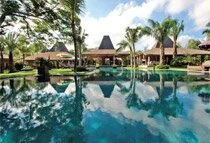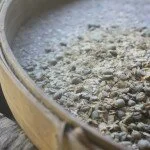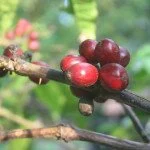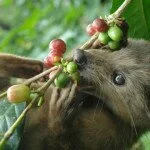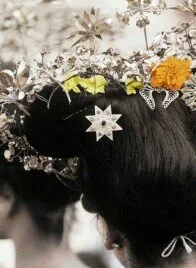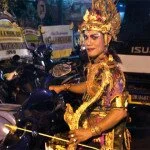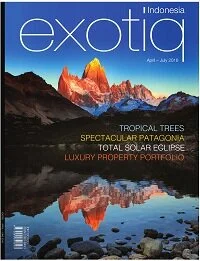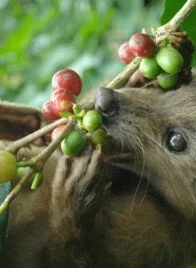
Kopi Luwak is the most expensive and most controversial coffee in the world. Retailers and consumers, lured by curiosity and the coffee’s novelty factor, are creating a demand but getting conned in the process, while farmers and suppliers are jumping on the bandwagon to the detriment of the innocent provider. Here‘s the full story and a genuine taste of the rare, 100% pure, wild kopi luwak.
THE COFFEE
Kopi luwak is actually a form of processing rather than a variety of coffee, and in the natural environment it is generally the end product (pun unintentional) of the arabica bean, which grows at higher altitudes than robusta and is favoured by the Asian palm civet cat, or luwak, because the berries are juicier and more fragrant. Kopi luwak’s distinctive taste is due to the fermentation process that takes place in the little guy’s stomach, caused by enzymes and acids, which digest the cherry-like covering and actually penetrate the beans, meaning that proteins are partially broken down and leached out during their journey through the digestive tract before being excreted. Research has shown the digested beans to be lower in caffeine and lower in total protein than regular coffee beans. Proteins are responsible for much of the flavour, particularly bitterness and acidity.
Premium wild kopi luwak comes from the freshest droppings, surprisingly not in the least bit pungent but disconcertingly reminiscent of peanut crunch bars. After being thoroughly cleaned, husked, and dried to the point where there is still a moisture content of 11-12%, the green beans have an earthy, musty smell. Key to the good taste of any coffee, however, is the roasting process in which temperature and timing is vital.
THE HISTORY
Back in the mid-nineteenth century during the era of ‘Cultuurstelsel’ (the Dutch-governed cultural system for the Dutch East Indies), the native farmers on the coffee plantations in Java and Sumatra were prohibited from harvesting coffee for their own use. However, they discovered a remarkably unconventional way in which to taste the produce.
Fortunately for the coffee-pickers, the crop was also in high demand among the local luwak population. These nocturnal catlike animals were long regarded as pests because they would climb the coffee trees and eat only the reddest ripest berries, bean and all. Primarily ground-dwelling and highly terrestrial, the creatures mark their ranges by dragging their anal glands along the ground. Outside of the coffee plantation, on the forest floor, there were always specific places where the civet would defecate as a means to mark its territory, and these ‘latrines’ would be a predictable place for local gatherers to find and collect the droppings, which contained the still-intact beans. So the farmers and coffee-pickers collected and cleaned these undigested nuggets, and then roasted, ground and brewed the coffee. The fame of aromatic ‘kopi luwak’ civet coffee spread from the locals to the Dutch plantation owners and soon became a Dutch favourite, yet because of its rarity and unusual process, the civet coffee was expensive even in colonial times.
A century-and-a-half later, someone somewhere along the way decided to market this coffee as a unique exotic product.
THE TASTE
Because it lacks the acrid bitter notes that coffee usually has, the wild kopi luwak can be brewed stronger, resulting in a full-bodied yet mellow, smooth flavour – some say with chocolaty or nutty undertones – lingering on the tongue with a strong clean aftertaste. But if you’ve ever tasted kopi luwak and this description doesn’t ring true then read on to find out why…
THE BAD NEWS
Now that this product is being marketed and sold as a luxury good and for its novelty factor, supply can’t meet demand. Let’s take a look at the facts: The coffee-picking season is only three months per year. Fermentation within the civet cat’s digestive system takes 10-12 hours. The yield of beans from one animal per day is only 50-100 grams. As a result, annual production is extremely low. To increase production, the traditional method of collecting droppings from wild civets has given way to intensive battery farming methods, which has raised ethical concerns about the treatment of the animals. Wild luwaks are caught by poachers and sold to farmers, caged, and often kept in appalling conditions including isolation in small cages resulting in a high mortality rate. Animals caged for extended periods can develop eating disorders as well as anti-social and aggressive behaviour patterns; they can also become withdrawn, hyperactive, or severely depressed. Significantly, the stressed animals do not produce the enzymes, which create the unique taste.
Retail prices of up to US$700 per kilo and the lack of a regulatory body have spurred the greed of the suppliers. The coffee is now being exported in larger quantities, but increased demand from the West has led to other coffee-producing countries such as Vietnam and the Philippines to produce their own versions. It has even driven a black market of knock-offs, which are treated with chemicals to mimic the effects of passing though the civet’s digestive tract. The imbalance between the estimates of how much authentic kopi luwak is being produced and the amount that is being sold each year under this name has led many buyers and those in the industry to question the integrity of this coffee. Genuine kopi luwak from wild civets is difficult to buy in Indonesia, disreputable vendors purchase beans from unregulated sources, there is no certification and no enforcement regarding the use of the name. In fact, there is even a local cheap coffee brand named ‘Luwak’. We have no way of knowing whether the kopi luwak we purchase in the supermarkets or drink in the coffee shops is the real deal. It may only contain a small percentage of the genuine article or it could be an absolute fake, but what we do know is that it will almost certainly have come from farmed animals living in cages.
So think twice before you taste. Kopi Luwak is overhyped, overpriced, unregulated, and often cruel to the creatures in charge of the production.
Rachel Love






